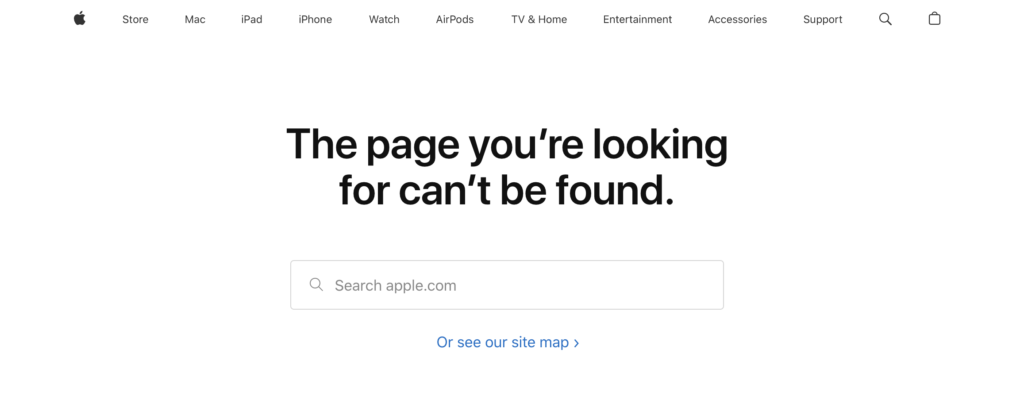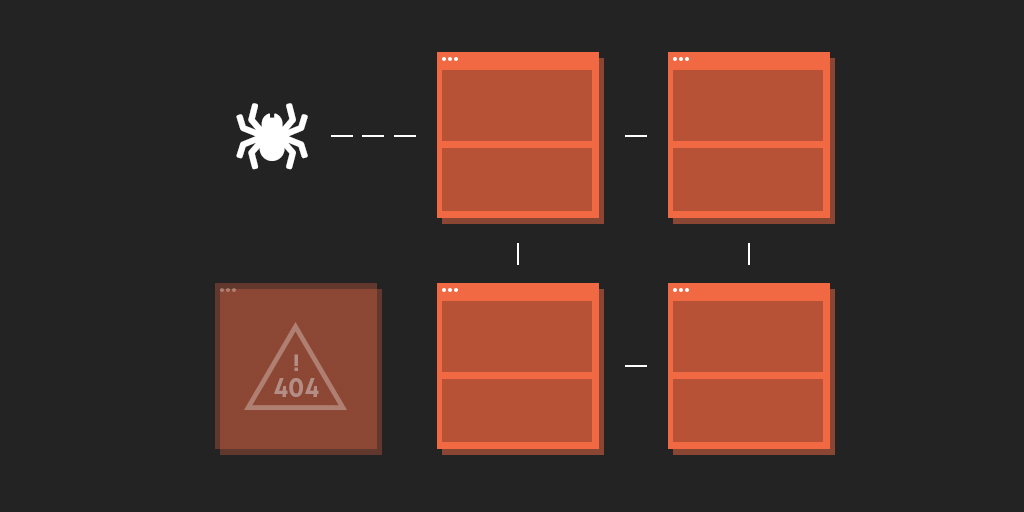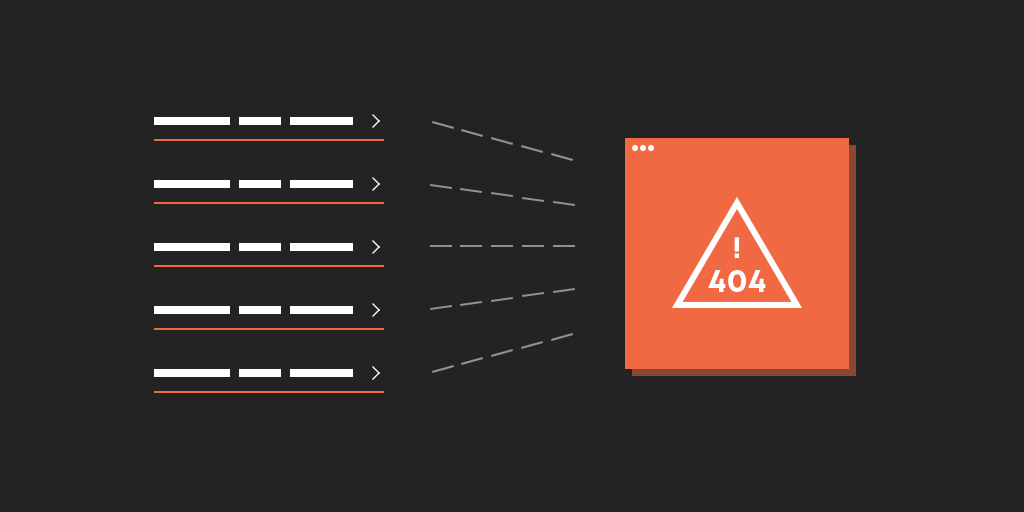If you’re a webmaster or a digital marketer, you’re probably familiar with 404 status codes.
404s can occur for a variety of reasons and the user’s journey can simply end, or they may continue to look for content in another location. When it comes to SEO and a 404’s influence on your website, it’s a similar journey for search engines.
It’s important to understand that 404s are a natural and inevitable part of the web, though. In fact, they may even be beneficial for SEO in some cases.
In this article, I’ll review the topic of 404 status codes and their potential impacts on SEO.
What is a 404 Status Code?
A 404 status code indicates that a website’s server could not find the requested resource – a standard HTTP response code. In simpler terms, it means that the page the user is trying to access doesn’t exist.
When a user finds a 404, websites usually show an error page. These usually include a message that the page can’t be found and may also show a suggestion to navigate to another page.

This response code is important because it lets both the user and the search engines know that the page doesn’t exist, which can consequently impact the website’s SEO.
What Causes a 404 Status Code to Show?
It is important to understand what causes a 404 error to appear in a user journey. 404 errors are returned when a user attempts to access a URL that does not exist on a website.
This can happen for a variety of reasons, such as:
- The page has been moved or deleted
- The URL was typed incorrectly
- The link pointing to the page is broken
While 404s may seem scary, they are actually a normal occurrence for any website and can have potential SEO benefits.
Why Are 404 Status Codes Normal for a Website?
404 status codes are a normal occurrence for any website, and there are several reasons why this may happen. Of course, websites change and evolve over time – at Logic, we’ve worked on enough web design and development projects to know that strategies and business priorities change!
Websites change; they are tweaked, they are updated, they are deleted in some cases. This can have impact on a wider scale, depending on how well connected the website in question is.
Regardless, the 404 status code is a natural by-product of online change. It’s important for any webmaster to remain vigilant of change for this reason.
Consider redirecting broken links, consider adding redirects to your own site, or maybe consider returning a 404 status code for your users?
The Potential SEO Benefits of 404 Status Codes
While 404s can be frustrating for users, they can be good for SEO.
Here are a few of the ways that 404s can benefit SEO:

1. Improved User Experience
One of the key factors that search engines use to rank websites is the user experience and, when a user initially clicks on a broken link, they expect to find the information they’re looking for (a good experience!)
If the page they’re trying to access doesn’t exist, they may become frustrated and leave the website. This can particularly be the case if a URL is redirected incorrectly (i.e., the redirect takes a user to the wrong page.)
However, if a website returns a 404 status code, the user knows that the page doesn’t exist, and they can navigate to another page. This is especially possible when using a custom 404 template.
This helps to create a better user experience and may even retain your users.

2. Improved Crawl Efficiency
Search engines use bots to crawl websites and index their pages. When a bot encounters a broken link, it will continue to crawl the website, wasting valuable time and resources.
By returning a 404 status code, the bot knows that the page doesn’t exist and can move on to the next page. Whilst “crawl budget” is a term generally gate-kept by webmasters of bigger websites, my opinion is that it’s always good to be aware of how you are using your “crawl budget”.
Consider the way that people can shop in different shops and spend more or less depending on their circumstances. Smaller websites likely have a smaller budget and, therefore, it is just as important to consider how much budget is being used when directing users and bots around a small website.
404s (and, furthermore, 410s) help to improve the crawl efficiency of the search engine and can therefore benefit a website’s SEO efforts simply by pointing a bot to more “correct” pages.

3. Better Link Management
It’s not news that links are an important factor in SEO. SEOs (particularly those undertaking an SEO campaign) spend lots of time building links, removing links, and monitoring the progress of websites after links are earned.
Monitoring links is an incredibly important practice in SEO – internally and externally!
Wherever you add links to external websites, be that on a blog article or elsewhere, it’s important to keep a check on the URL you’re pointing to. When a page is deleted, or becomes outdated, it’s important to remove any links pointing to that page.
When you make changes to your own website, backlinks from external sites could also be impacted. High authority links should be redirected or, if you have access to the editor, changed to the new URL.
With that said, the impact of spam backlinks can be limited by pointing those links to 404s. When a search engine sees that a website is pointing to a 404 status code, there is a higher chance that this link is disregarded. For that reason, any negative link equity should be disregarded, and may have a cumulative benefit across the site.
So… are 404 status codes good or bad for SEO?
404 status codes are a normal occurrence for any website. Managed and monitored correctly, they can be used to an SEO advantage!
Practice your link management, ensure that the correct 404s are returned, and consider how that might impact your crawl budget.
If you’ve any questions, get in touch. Whether it’s a short term SEO campaign or a long term strategy, Logic Design can provide a solution to your SEO needs and get your website back on track to success.